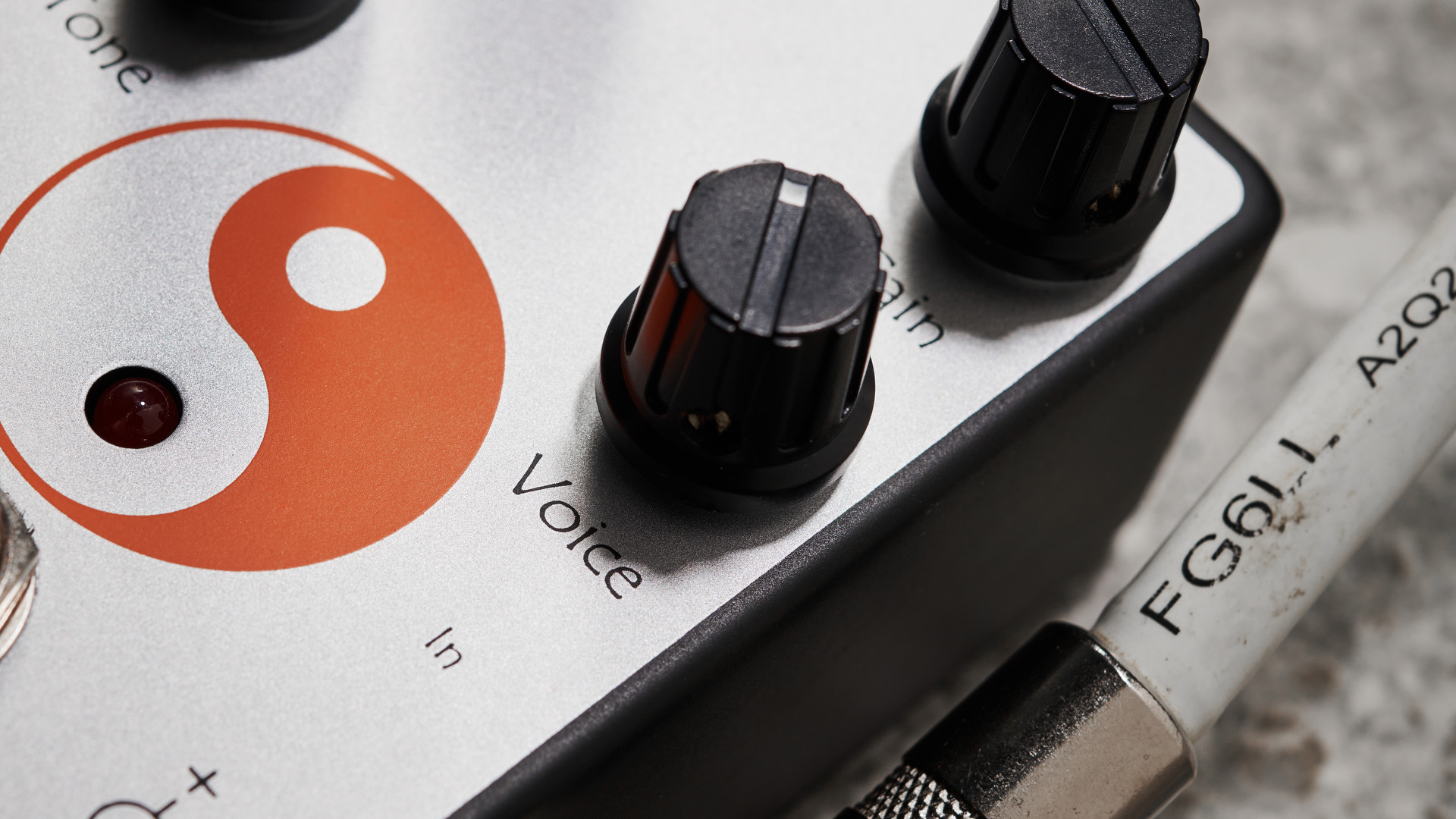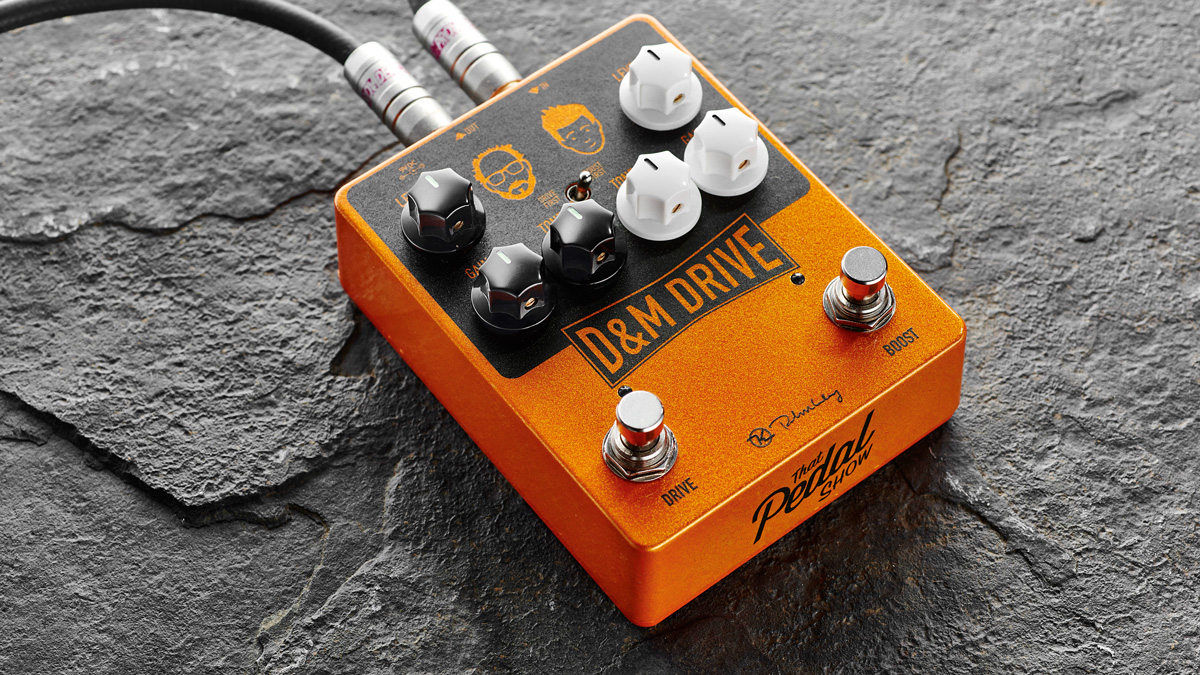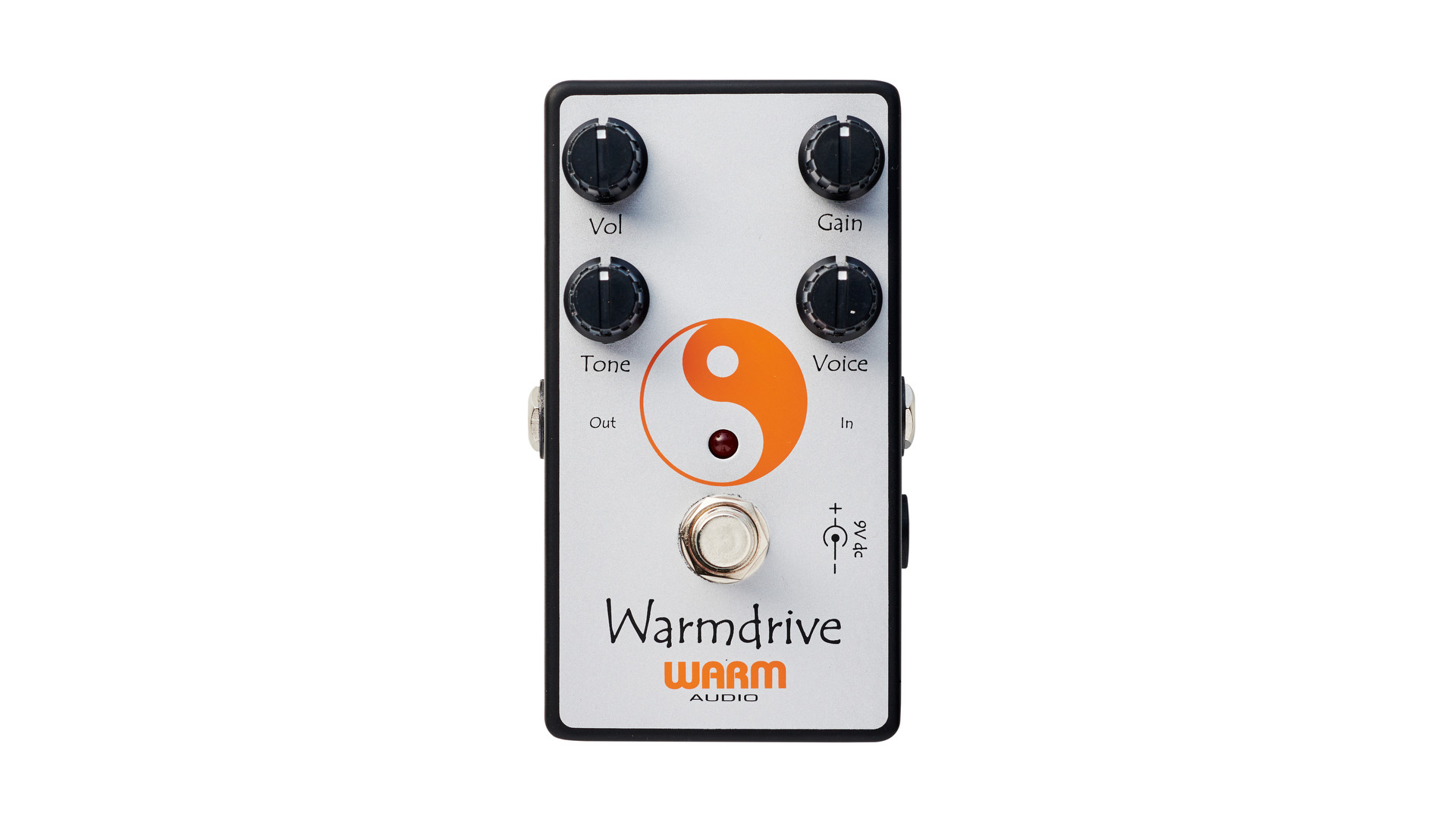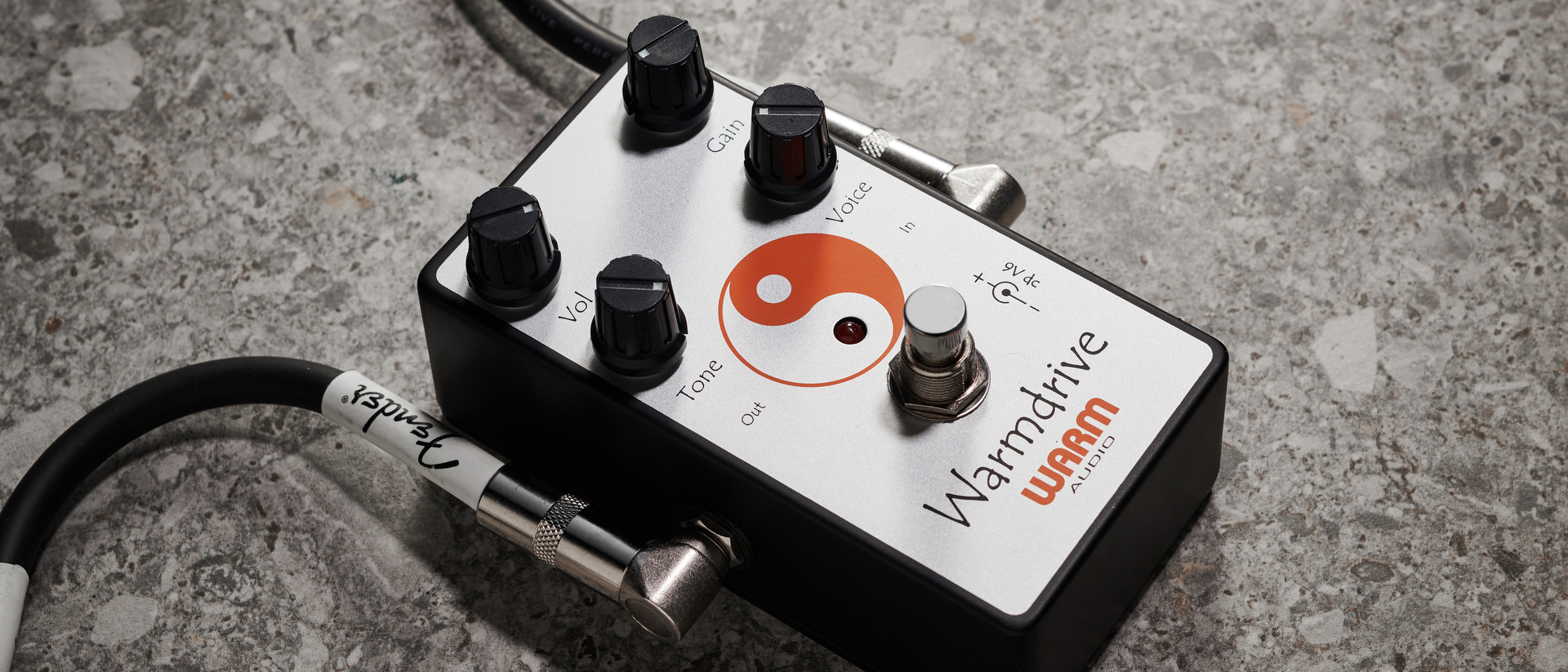MusicRadar Verdict
The Warmdrive is an amp-like drive that is too good for your amp to be considered a rival, adding warmth as advertised, and applying low to mid-gain crunch that just seems to make everything sound – and feel – that much better.
Pros
- +
Drive is just so... Warm.
- +
Lots of tone-shaping control and super versatile.
- +
Sensibly priced.
- +
Small footprint.
Cons
- -
Not for high-gain freaks.
MusicRadar's got your back
Warm Audio Warmdrive: What is it?
The Warm Audio Warmdrive is one of two exacting replicas of two of the most sought-after out-of-production overdrive pedals on the vintage market today.
While the Centavo is on Klon klone duty – a format that we are all familiar with by now – the Warmdrive is a little more niche, offering contemporary players an affordable version of Alfonso Hermida’s legendary Zendrive. You would need around 600 bucks to buy one online.
It doesn’t have the mythological cultural weight as the Klon Centaur, it never went as mainstream, but the Zendrive was seen by many pedalboard enthusiasts as a work of genius. Hermida, prior to designing it, was a smart guy, how has Nasa on the CV.
Like the original unit, the Warmdrive is a compact pedal. It is tall, too. Perhaps pedal designers will do as city planners did the world over and recognise that pedalboard real estate is at a premium, built up rather than out. These days we’ll do anything for a pedal that does more with a smaller footprint

The colour of the Ying Yang design has changed from black to orange but similarly incorporates the red LED that lets you know when the pedal is active. The four-knob control setup is familiar, too. Here Warm Drive gives us dials for Volume, Tone, Gain and Voice.
Open up the enclosure and you will encounter an array of ‘components of interest’ to aspiring guitar effects pedal designers – 2N7000 MOSFETs, a NE5532 Op-Amp, carbon resistors, 1N34A Germanium / Schottky BAT41 diodes. Maybe when all this stuff starts to run out you’ll have people prising this open and mining it for parts, but then Warm Audio is no doubt hoping the tones here will persuade you that these are quite happy in their forever home.

The sound we are looking at here is an amp-in-a-box drive. Not any old amp, but a Dumble. Is there one Dumble amp sound? Most would argue not. Not all cinsault tastes the same, right? But then there are some classic electric guitar tones that make us think Dumble, such as those that tumble out the speaker when a Stevie Ray Vaughan, Robben Ford, or John Mayer record is on.
Want all the hottest music and gear news, reviews, deals, features and more, direct to your inbox? Sign up here.
The price of an amplifier built from the ground up or modified by the late Alexander Dumble is eye-watering and beyond most of us. To ask a $149 pedal to do the Lord’s work and give us the sound of an Overdrive Special is asking too much. So, then, what should our expectations be when we plug in? Well, maybe that goes back to the Zendrive, and its reputation for a classy, super articulate drive. Or maybe it’s best just to plug in and see what we get.

Warm Audio Warmdrive: Performance and verdict
Sometimes the presence of an amp-in-a-box drive pedal can get in the way of the blessed union between your guitar and dearly beloved amplifier. But when we plug in here there are all manner of ways it can play mediator between both and find new dynamics you might hitherto have thought impossible.
Kicking in at unity gain and it’s an example of nominative determinism in the wild; yes, yes this is a Warmdrive. Tweaking the tone past noon might give your tone the added sparkle it needs. As it transpires, turning up the heat in the relationship between guitar and amp is one of this pedal’s strongest suits and we are here for that.

• Keeley D&M Drive and Boost
The D&M Drive has turned out to be a real gem among dual overdrive pedals, each side being sufficiently individual to give you quite different tonal options, while complementing the other perfectly.
• Way Huge Saucy Box Overdrive
The tone knob takes you from syrupy Bonamassa-style leads to Plexi-style bite, while the rich harmonic overtones that accompany sustained notes will have you hitting open chords over and over.
• TC Elecronic MojoMojo
The function of the MojoMojo is to provide the sound of overdriven valves in a hard-working amp, and not just any amp – TC's desired flavour here is vintage tweed. Not a bad place to start.
As ever, Warm Audio offers some helpful settings to get you on your way. It is not a gain monster but there’s some saturation there to get things going at the weekend. Where it really gets you is how it translates its low-gain tone-sweetening capability in different contexts. You can add thickness and – again – heat to rhythm guitar, dial in some brilliance for open chords to ring out, and some bite so solos might be heard above the band.
It is amp-like. In so far as it is a Dumble in a box, well, it is dynamic and touch-sensitive and is great when pushing an already overdriven amp a little harder. If things get a bit wild, you can always roll back the volume pot on your guitar.
The Warmdrive might be inspired by a cult classic but in no way could this overdrive be described as niche. It’s the sort of thing that could sit on any number of ‘boards, to be used in any situation when you want some low-gain preamp sauciness in your sound.
Some amp-style drives have a three-band EQ and that works a treat. They are just like an amp.
The Warmdrive has a Tone and a Voice control, with the Voice dialling in your tone before the clipping stage and the Tone pot sorting things out after the signal has come through, and between them, you’ll have an abundant range of tone-shaping power that ensures the Warmdrive plays well with humbucker and single-coil pickup alike.
It stacks quite nicely, too. Pairing with a Fulltone OCD yielded some very interesting adventures in resonant, harmonically rich crunch.
But then a pedal like this is like chips; it just seems to go with everything.
MusicRadar verdict: The Warmdrive is an amp-like drive that is too good for your amp to be considered a rival, adding warmth as advertised, and applying low to mid-gain crunch that just seems to make everything sound – and feel – that much better.
Warm Audio Warmdrive: The web says
"Every knob setting unveils a new “sweet spot” of warmly pronounced drive, whether you need mild distortion or a sustained gain bump that cushions each note and chord in velvety softness.
"It also nails that cutting fusion-like tone heard in blues, bebop and country, which many seasoned guitarists lust after."
Guitar World
"The Warmdrive is a thick, chewy overdrive at heart, but moves easily from smooth and warm to crisp and crackling, depending on where you set the voice knob. And there’s lots of room to fine-tune further using the tone control. There’s also plenty of range in the gain and level controls, which makes the pedal capable of much more than full-on lead tones."
Premier Guitar
Warm Audio Warmdrive: Hands-on demos
Warm Audio
Premier Guitar
Reverb
60 Cycle Hum
Warm Audio Warmdrive: Specifications

- TYPE: Overdrive pedal
- ORIGIN: USA
- CONTROLS: Gain, Tone, Voice, Volume
- FEATURES: 2N7000 MOSFETs, a NE5532 Op-Amp, carbon resistors, 1N34A Germanium / Schottky BAT41 diodes
- BYPASS: True bypass
- POWER: 9V DC pedalboard power supply (drawing 25mA), or battery
- CONTACT: Warm Audio
Jonathan Horsley has been writing about guitars and guitar culture since 2005, playing them since 1990, and regularly contributes to MusicRadar, Total Guitar and Guitar World. He uses Jazz III nylon picks, 10s during the week, 9s at the weekend, and shamefully still struggles with rhythm figure one of Van Halen’s Panama.

